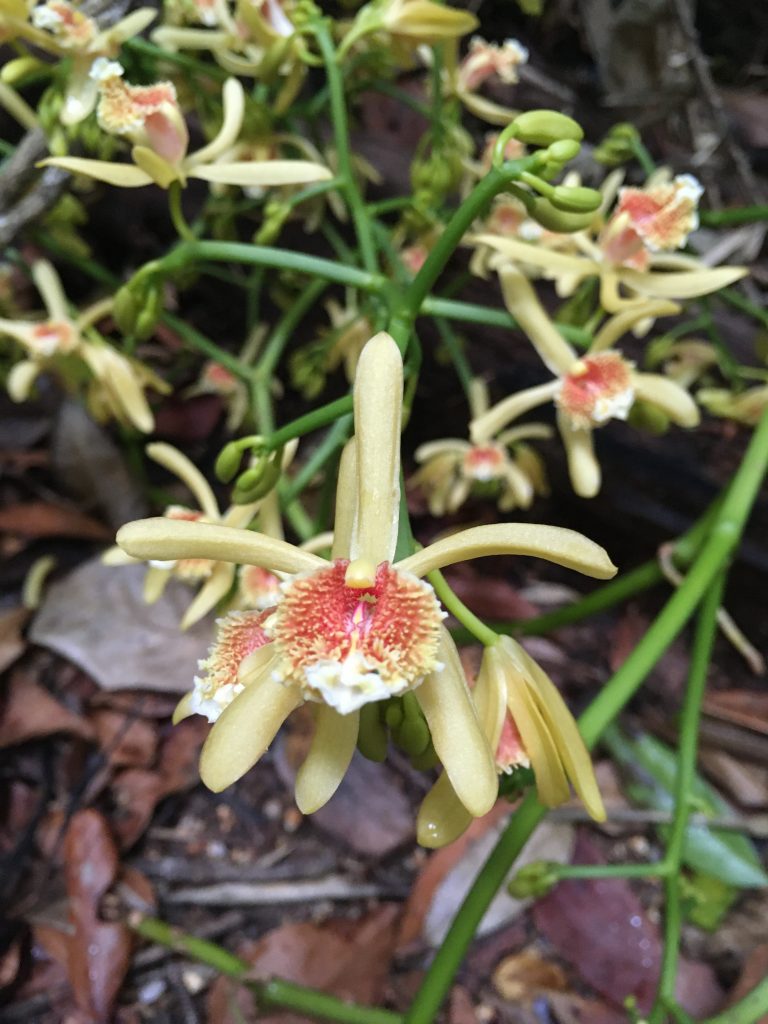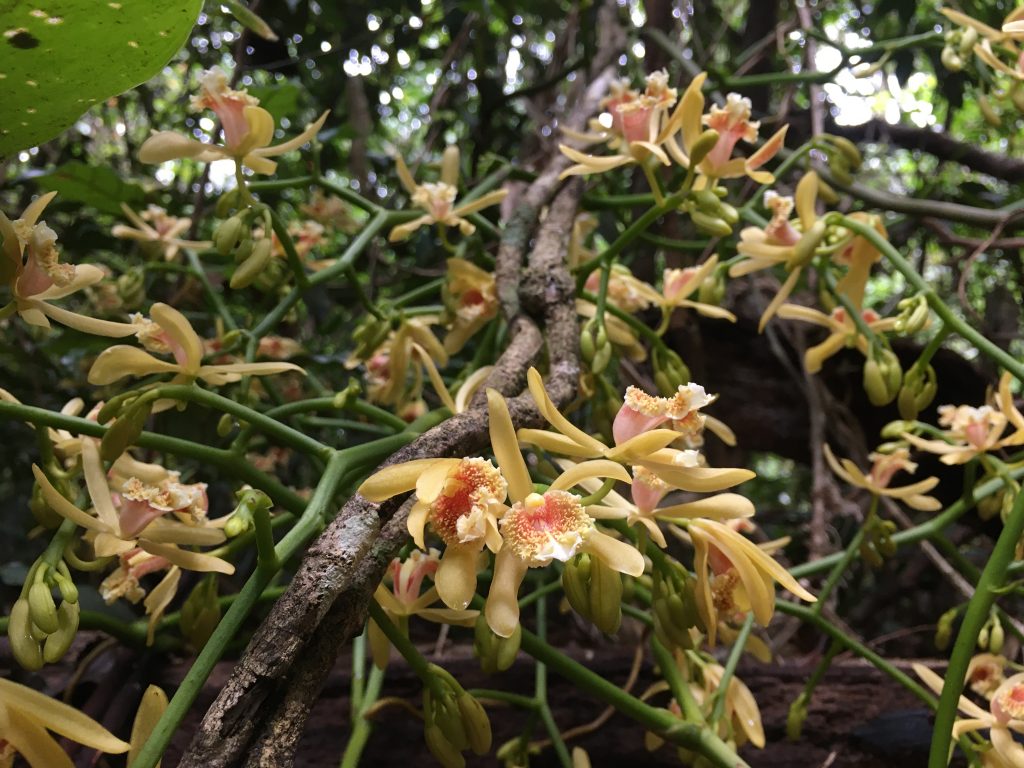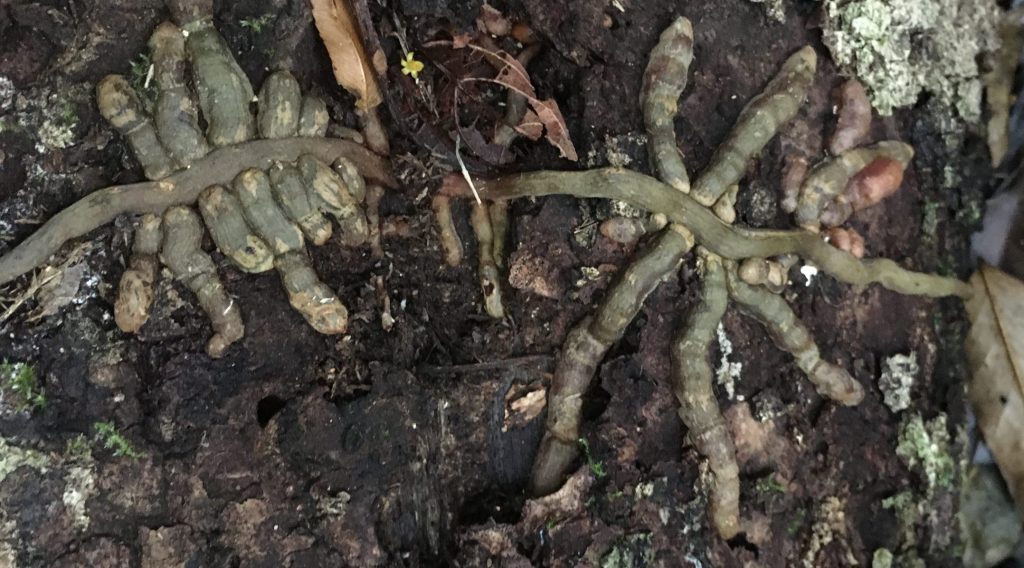
As mentioned by Michele a couple of days ago, there is currently a rather spectacular orchid flowering on the H-Track. It is the Giant Climbing Orchid (Pseudovanilla foliata) Apart from its beautiful flowers (in copious quantity), this orchid is also special in that it has no leaves. It is one of several species of saprophytic orchid that derives its food from rotting wood rather than from photosynthesis. This particular species is not often seen around Paluma since it spends most of its life as an inconspicuous tangle of stems climbing up dead trees – it flowers only briefly. Once the logs and dead trees that it feeds off have fully rotted away it dies off. Wilfred Karnoll informs me that after cyclone Yasi these orchids made a brief appearance in a few locations along the walking tracks near the village.


While this orchid has green stems and may be able to make a small amount of food for itself, it is unlikely to able to grow and produce masses of flowers on this energy source alone. Most saprophytic orchid lack any green colour, and thus do not need (and cannot use) sunlight to obtain food. One group of these orchids has completely forsaken sunlight and spends its entire life, growing, flowering and fruiting underground – never seeing the light of day!
Technically saprophytic orchids do not directly feed off decaying wood and vegetation, but derive their food from a close symbiotic relationship with fungi that do all the hard work of breaking down the fairly indigestible wood and then provide it directly to the roots of the orchid. Whether this is a mutualistic relationship (with both obtaining benefit from the exchange) or a parasitic one (with the fungi being robbed of fuel it would prefer to use for its own growth) is not fully understood. So far, research on this matter appears to have failed to show any clear benefit to the fungi.
After reading a bit more about orchids on the web I discovered that the relationship between fungi and orchids is widespread and devilishly complex. Virtually all orchids rely on fungi for seed germination. Orchids produce seeds that are microscopic in size (they make up for this by producing prodigious numbers in each seed capsule). These seeds are so small that they do not have the energy reserves that all other seeds use to fuel the cell division needed for germination and subsequent growth of the first green leaves that will manufacture new fuel from photosynthesis. These tiny seeds rely entirely on fungi for that germination energy. Some orchids have been shown to have an ongoing obligate relationship with fungi, while others shrug off this reliance once fully developed. A further twist in the orchid-fungi story occurs in some species, where the fungi that the orchid derives its food from, is itself deriving its fuel from the roots of certain tree species. Thus we have sunlight being turned into food high up in the forest canopy and then being transferred down to the forest floor, into fungi and then into the saprophytic orchid!
Text and Photos by Jamie Oliver

A very interesting article, Jamie. I have seen three of these orchids some years ago on the McClelland Lookout track. One was the large specimen at ground level that Wilfred mentioned. The other two appeared in the next year, high in trees in the neighbouring vicinity. I have seen none there in the years since.